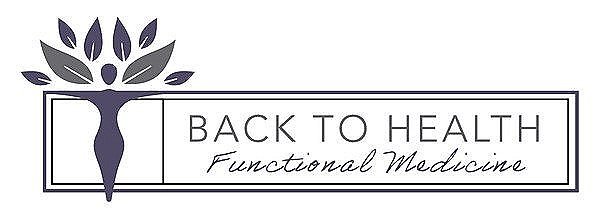Toxin Exposure & Heavy Metals: The Hidden Saboteurs of Thyroid Health
When most people think of thyroid dysfunction, they think about hormones — not their shampoo, water, or cookware.
But the truth is, environmental toxins and heavy metals are some of the most overlooked triggers for Hashimoto’s and other autoimmune conditions.
Your thyroid is incredibly sensitive to disruptions — especially from modern chemicals and pollutants that interfere with your body’s natural balance.
Let’s explore how this happens… and how you can begin to detox your body, your home, and your lifestyle.
Endocrine-Disrupting Chemicals: Tiny Toxins, Big Problems
Endocrine disruptors are chemicals that mimic or block your body’s hormones. These substances can alter the function of your thyroid and contribute to immune dysregulation, setting the stage for autoimmunity.
Common sources of endocrine-disrupting toxins include:
Plastics (BPA, phthalates) like cutting boards, coffee makers, K-cups, and water bottles
Pesticides on non-organic produce
Conventional household cleaners
Tap water (chlorine, fluoride, pharmaceuticals)
Synthetic fragrances (in candles, air fresheners, personal care products)
Non-stick/Teflon cookware
Many of these are so common, you’re likely exposed to dozens of them before you’ve even finished your morning coffee.
Heavy Metals: Mercury, Lead & Autoimmune Triggers
Heavy metals like mercury, lead, aluminum, and cadmium are another hidden threat. These metals can:
Disrupt thyroid hormone conversion
Damage the gut barrier (leading to leaky gut)
Impair liver detoxification
Trigger or exacerbate autoimmune flares
For example, mercury — commonly found in old dental fillings, fish like tuna, and industrial runoff (into our drinking water) — has been shown to accumulate in thyroid tissue and provoke immune responses.
Detox Begins at Home: How to Reduce Your Toxic Load
You can’t live in a bubble — and I would never expect you to.
But the good news is, there are simple, affordable changes you can make today that will dramatically reduce your toxic burden and support your healing.
Here’s how to start:
1. Drink Clean, Filtered Water
Tap water often contains chlorine, fluoride, heavy metals, and even hormone residues. These chemicals disrupt your thyroid and stress your detox systems.
I personally use a Berkey carbon filtration system at home — it removes toxins without stripping beneficial minerals (like reverse osmosis can).
Bonus tip: Start each morning with warm lemon water (I add a pinch of pink Himalayan or Celtic sea salt ) on an empty stomach to gently stimulate your liver and flush out overnight toxins.
2. Switch to Non-Toxic Beauty & Cleaning Products
Your skin is your body’s largest organ, and it absorbs what you put on it. That’s why personal care and household products matter.
Use apps like EWG Skin Deep or Yuka to scan your current products and find safer alternatives.
Avoid synthetic fragrances, parabens, and phthalates commonly found in air fresheners, laundry refreshers and detergents, dry sheets, perfume and anything with ‘fragrance’ as an ingredient.
Simple swaps like switching to castile soap (I use it for body wash, face wash, and to wash my hair), wool dryer balls, or coconut oil-based (my new favorite is grass-fed tallow) lotions can go a long way.
3. Sweat It Out
Sweating is one of your body’s best detox mechanisms. Make time for:
Infrared or traditional saunas (just 15–30 minutes, 2–3x/week)
Exercise that gets you sweating
Dry brushing before a shower to support lymphatic drainage
Pro tip: Follow up with a mineral-rich bath (like Epsom salt) to replenish magnesium and further support detox.
4. Eat to Detoxify
Support your liver — your main detox organ — with foods that assist in toxin elimination:
Cruciferous veggies (broccoli, Brussels sprouts, cabbage)
Beets, garlic, onions, and turmeric
Fiber-rich foods like flax, chia, and leafy greens
Hydration to flush toxins via urine and sweat
Bonus: these foods also reduce inflammation and support healthy estrogen metabolism (also important for thyroid and hormonal balance especially during transition phases like perimenopause).
5. Test, Don’t Guess
If you're wondering whether toxins or heavy metals could be contributing to your symptoms — functional testing is the best way to get answers.
I work with labs that can assess:
Heavy metal burden
Detox capacity
Oxidative stress
Environmental toxin exposure
Knowing your toxic load helps you create a targeted, strategic plan to remove those burdens safely and effectively — without overloading your system.
You Deserve a Clean Start
Your body is constantly working to detox — but in today’s world, it can get overwhelmed.
By reducing the toxins coming in and supporting your body’s natural pathways out, you create the conditions for true healing.
Whether you're just starting your wellness journey or deep into Hashimoto’s healing, reducing your toxic load is one of the most empowering steps you can take! You are not alone on this journey. I am here to guide you every step of the way. CLICK HERE to get started for free today.
